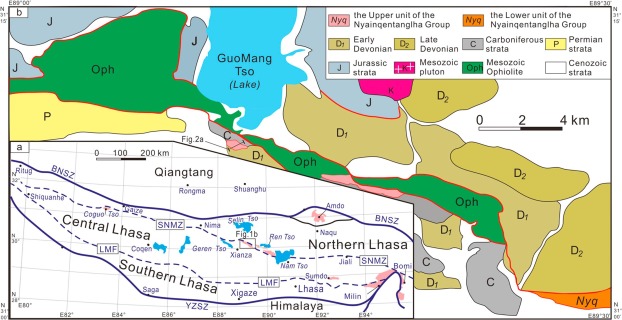Title:Neoproterozoic sedimentary rocks track the location of the Lhasa Block during the Rodinia breakup
Author(s):Zhou, X (Zhou, Xiang); Zheng, JP (Zheng, Jianping); Li, YB (Li, Yibing); Griffin, WL (Griffin, William L.); Xiong, Q (Xiong, Qing); Moghadam, HS (Moghadam, Hadi Shafaii); O'Reilly, SY (O'Reilly, Suzanne Y.)
Addresses:Zhou, Xiang,China Univ Geosci, Sch Earth Sci, State Key Lab Geol Proc & Mineral Resources, Wuhan 430074, Hubei, Peoples R China; Zheng, JP (reprint author),China Univ Geosci, Sch Earth Sci, State Key Lab Geol Proc & Mineral Resources, Wuhan 430074, Hubei, Peoples R China.
Source:PRECAMBRIAN RESEARCH Volume:320 Pages:63-77
DOI:10.1016/j.precamres.2018.10.005
Published:JAN 2019
Abstract:Cimmerian terranes in Tibet are thought to be as old as Archean or as young as Neoproterozoic or even early Paleozoic in age. However, their Precambrian history and their role in the assembly and dispersal of early supercontinents (e.g., Rodinia) are still poorly known. Here, U-Pb dating, trace-element geochemistry and Lu-Hf isotopes of detrital zircons (351 grains) from the Nyaingentanglha-Group clastic rocks, the earliest strata overlying the Lhasa Block (South Tibet), are used to constrain the provenance of the sediments and test paleogeographic and tectonic models for the Lhasa Block during the breakup of the Rodinia supercontinent. The youngest detrital zircon cluster (803 +/- 5 Ma) in the clastic rocks and granitic dykes (797 +/- 10 Ma) intruding them constrain the deposition age close to 800 Ma. Four main groups of detrital zircons in these sediments record several sources, including Mesoproterozoic and Neoproterozoic juvenile terranes, a Grenvillian orogenic belt and an Archean continental-crust component. Detrital-zircon age distributions and Lu-Hf isotopic data reveal the variation of the sedimentary provenance and suggest its affinity to the Himalaya and/or the East Africa Orogen. These results show that the Lhasa Block was probably located within a giant convergent plate margin system surrounding the Rodinia supercontinent during its breakup in the Tonian time.

Full Text from Publisher:https://www.sciencedirect.com/science/article/pii/S0301926818300032?via%3Dihub

